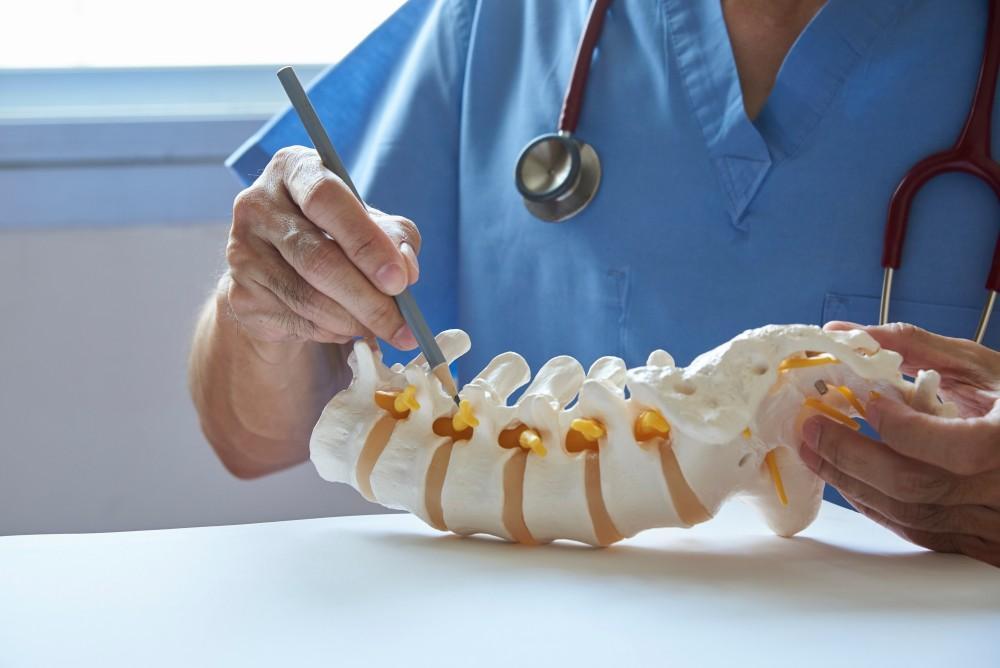
Treating Painful Compression Fractures with Kyphoplasty

Bones are an organ that grows and decays and grows, over and over throughout your life. Osteoporosis is a bone disease that develops when too much bone tissue breaks down, when the body makes too little tissue to keep up with the breakdown, or both.
With osteoporosis, the bones become weak and brittle. You can break them easily in even a minor fall or just from sneezing. Spontaneous compression fractures in the spinal vertebrae characterize the disease.
At Vertrae®, board-certified neurosurgeon Dr. Kamal R. Woods and his team treat all manner of spinal conditions, including compression fractures, through spinal surgery, minimally invasive spinal surgery, and robotic surgery. The appropriate treatment for compression fractures is a procedure known as kyphoplasty. Here’s what’s involved.
Osteoporosis revealed
Under a microscope, healthy bone tissue appears like a honeycomb, with thick walls and evenly spaced holes. Osteoporosis means “porous bone,” and when you look at bone tissue from a patient living with the disease, you see the walls are thin, and the holes are large and irregularly spaced, representing the loss of tissue mass and density.
Because there’s more space than tissue, the bones break more easily than a normal bone would. The population at greatest risk for developing osteoporosis from non-controllable causes (i.e. genetics, race) is small, white or Asian, postmenopausal women.
Osteoporosis is called a “silent disease” because you have no way to tell if your bones are weakened without a bone density scan, called a DXA (pronounced DEXA).
Breaking a bone or losing height and/or upper back curvature are all characteristic signs you have the disease. If you experience any of these, contact Vertrae® as soon as possible so we can get you an accurate diagnosis and appropriate treatment.
What is a compression fracture?
Your spine contains a stack of 24 bony vertebrae with cushiony discs between each pair that absorb shock when you walk, jump, or turn.
If your vertebrae lose bone density, your spine may start to curve with the stress, causing a humpback, or the vertebrae may collapse in on each other — a compression fracture. The fractures are extremely painful and may prevent you from doing even the most basic things, such as getting out of bed.
Compression fractures usually form in the thoracic (chest) region of the spine, which includes the T1-T12 vertebrae, but they may also occur in the lumbar (lower back) spine, L1-L5.
Kyphoplasty for compression fractures
Kyphoplasty is a minimally invasive surgical procedure used to treat spinal compression fractures. The goals are: stabilize the fractured vertebra(e), restore the vertebrae to their normal height, and relieve the pain from the break. The procedure takes about an hour per vertebra.
For the procedure, you lie face down on the operating table, and you receive anesthesia to keep you comfortable. Dr. Woods makes a small, half-inch incision over the affected area.
The doctor uses X-ray guidance to help insert a narrow tube into one side of the fractured vertebra. Next, he threads an uninflated balloon through the tube and into the vertebral body.
At its destination, the balloon inflates to create an open cavity inside the bone. This restores lost height due to the collapsed vertebra. Dr. Woods then deflates the balloon and pulls it back out the tube, leaving the new bone cavity behind.
Finally, he injects PMMA, a type of bone cement, into the new cavity to ensure the vertebra doesn’t collapse again. He may also repeat the process on the other side of the vertebra to ensure uniformity.
You continue to lie on the table for another five minutes or so to ensure the cement hardens. Usually you can go home the same day, and Dr. Woods gives you detailed aftercare instructions.
Some patients experience immediate pain relief, while others need a day or two before their pain level drops. You can return to your normal routine once you’re home, though we recommend you avoid strenuous activities such as lifting, driving, and intense exercise for at least six weeks.
Are you dealing with painful compression fractures or are at risk for developing them? Then it’s time to come into Vertrae® for an evaluation with Dr. Woods. To schedule, call our office at 844-255-2225, or book online with us today.
You Might Also Enjoy...


4 Benefits of Outpatient Spine Surgery

Am I a Candidate for Kyphoplasty?

Pulled Muscle vs. Pinched Nerve: What's the Difference?

4 Subtle Signs of Sciatica

